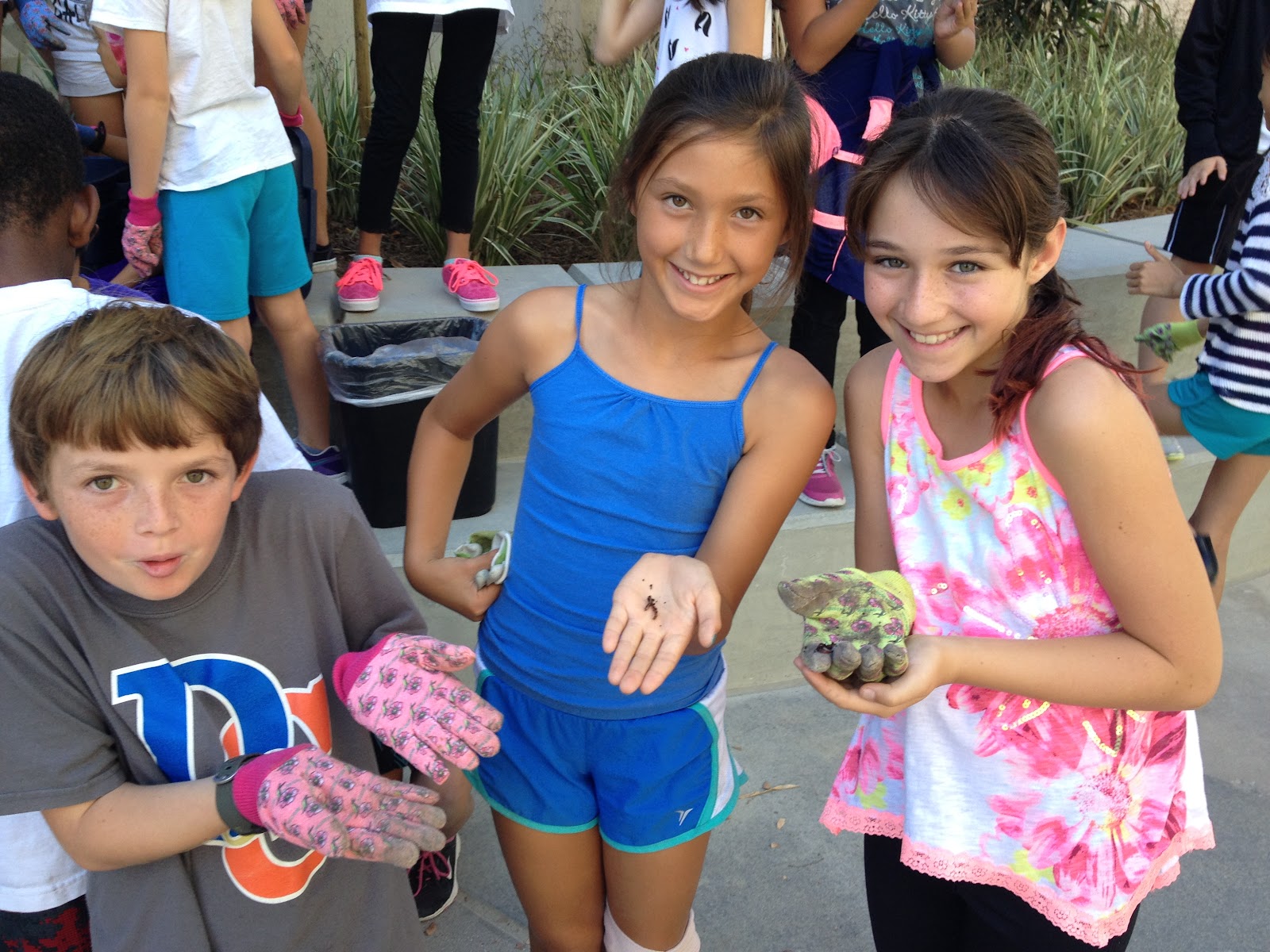In our Deep Dive class called “Designing a School Garden,” we used the design thinking process to empathize, research, and decide what we want in a school garden.
 First, we asked students, teachers, and community members what they wanted in a school garden. The students said they wanted lilies, roses, and sunflowers. Other students asked if we could plant tomatoes, garlic, peaches, broccoli, basil, onions, carrots, and cucumbers. Other adults wanted cool fruits and vegetables that were uncommon.
First, we asked students, teachers, and community members what they wanted in a school garden. The students said they wanted lilies, roses, and sunflowers. Other students asked if we could plant tomatoes, garlic, peaches, broccoli, basil, onions, carrots, and cucumbers. Other adults wanted cool fruits and vegetables that were uncommon.
To decide how to make our garden we had to choose what type of garden we wanted. We made a list of pros and cons of the following garden types: hanging gardens, hydroponic gardens, garden from salvaged items, potted garden, galvanized steel horse trough gardens, and wooden raised garden beds. We finally decided that wooden raised beds are the best for our garden because they are the cleanest and the easiest to work with.
 First, we asked students, teachers, and community members what they wanted in a school garden. The students said they wanted lilies, roses, and sunflowers. Other students asked if we could plant tomatoes, garlic, peaches, broccoli, basil, onions, carrots, and cucumbers. Other adults wanted cool fruits and vegetables that were uncommon.
First, we asked students, teachers, and community members what they wanted in a school garden. The students said they wanted lilies, roses, and sunflowers. Other students asked if we could plant tomatoes, garlic, peaches, broccoli, basil, onions, carrots, and cucumbers. Other adults wanted cool fruits and vegetables that were uncommon.To decide how to make our garden we had to choose what type of garden we wanted. We made a list of pros and cons of the following garden types: hanging gardens, hydroponic gardens, garden from salvaged items, potted garden, galvanized steel horse trough gardens, and wooden raised garden beds. We finally decided that wooden raised beds are the best for our garden because they are the cleanest and the easiest to work with.
We walked around Design39Campus and decided on the location of our garden. We decided that we needed a fresh water source, a sunny area, and an area where kids wouldn’t trample the crops. We decided on the the gravel in front of the school. We decided on that area because it had a hose spigot, it had good water drainage, and lots of sunlight. Here is the spot that we picked.

We measured the front of the school, where the garden is going to be. We had groups to measure the areas. We made blueprints by drawing of what our garden was going to be. We added the measurements together. We wrote it on a piece of paper and added a key.
We made a presentation to show ideas to our community partners. We divided into groups we created a presentation on garden ideas and statements. We also emailed Mim from Healthy Day Partners to get more ideas for designs for our school garden. We debated on steel horse troughs and wooden raised gardens and Mim told us wood gardens would be best because steel horse troughs may not be safe for food growing purposes.
Next, after we had done everything, it was finally time to build! We made six, 6 feet long by 3 feet wide by 3 feet tall. It took us 3 hours and it was a lot of fun! We needed help from everyone, even parents!
Be Wise Organic Farm donated all the soil and our first lettuce and cabbage seedlings. Here’s how the looked after we first planted them.
And here is our lettuce now! We have green leaf, red leaf and romaine lettuce, as well as cabbage plants and green beans.
And here is our very own Calista with the lettuce she took home to her family!
We are doing something called Vermiculture. It is great for our garden! Vermiculture is where is the process of using redworms to decompose organic yard and food waste, turning the waste into a natural fertilizer called wormpoop or worm castings. Worm fertilizer adds nutrients and minerals to the soil that helps create healthy plant life. Yay! Our garden will be healthy with Vermiculture! Here are 2 of our red worms!

A HUGE thank you to our D39C Edible Garden sponsors:
Chipotle
Healthy Day Partners
Be Wise Organic Farm
Hydro-Scape Irrigation
Chipotle
Healthy Day Partners
Be Wise Organic Farm
Hydro-Scape Irrigation
Blog Written By:
The D39C Garden Group
The D39C Garden Group
4-5-6 Students
Design39Campus


%2B2.JPG)

No comments:
Post a Comment
Have feedback or ideas for D39C? Please share!